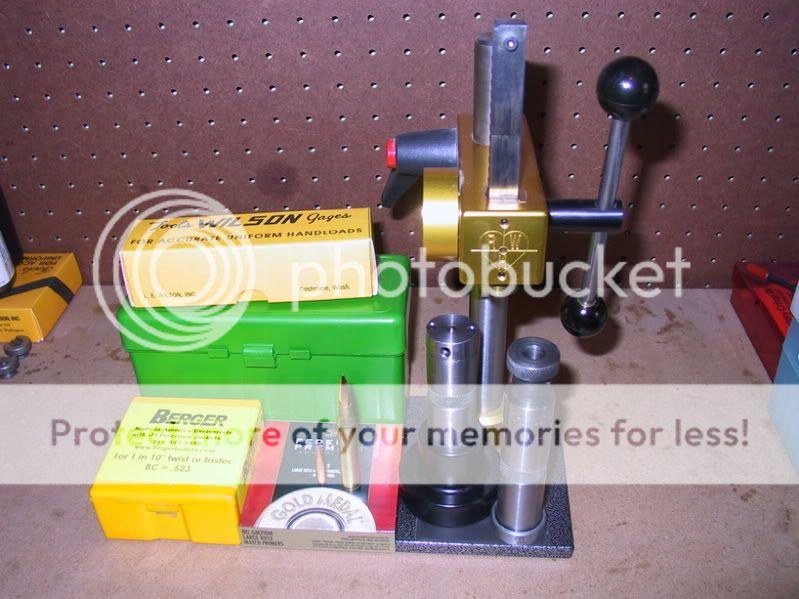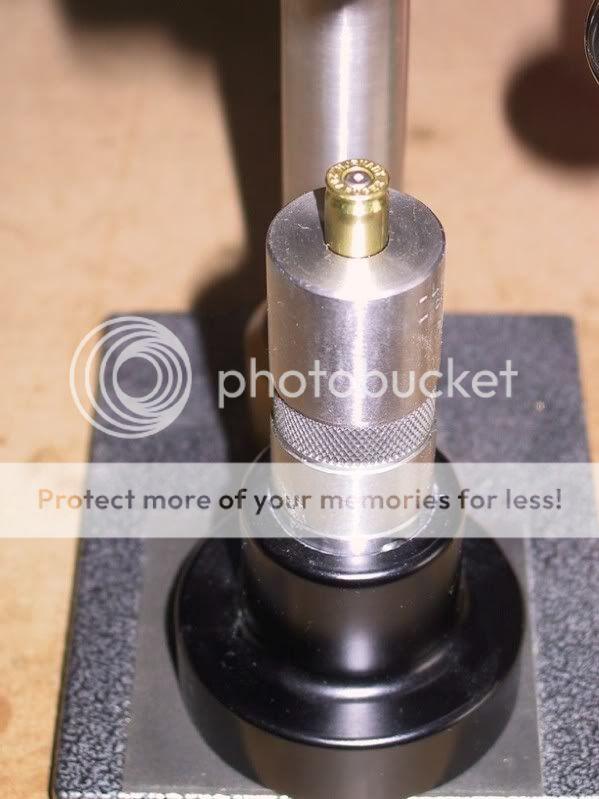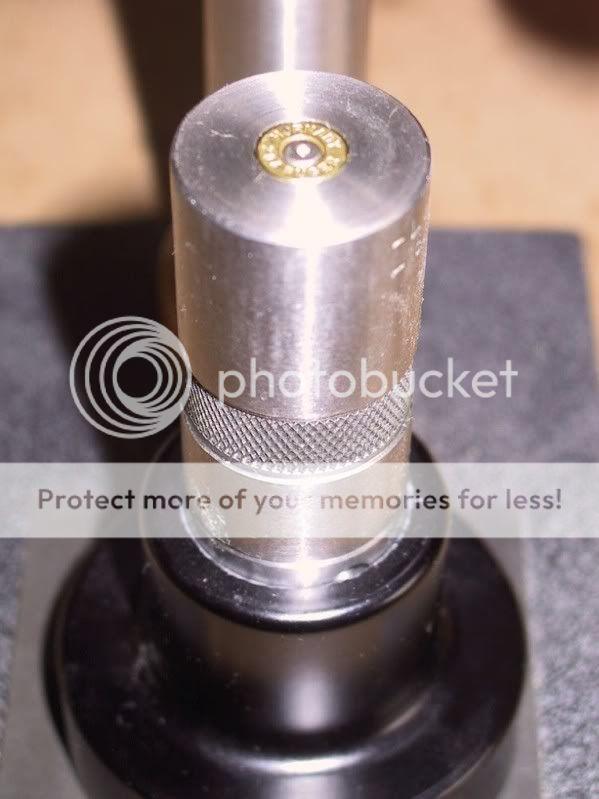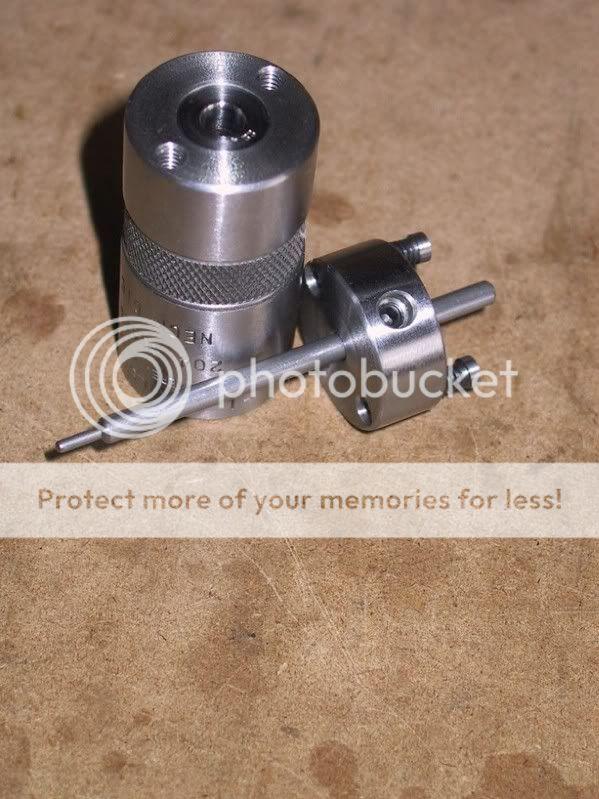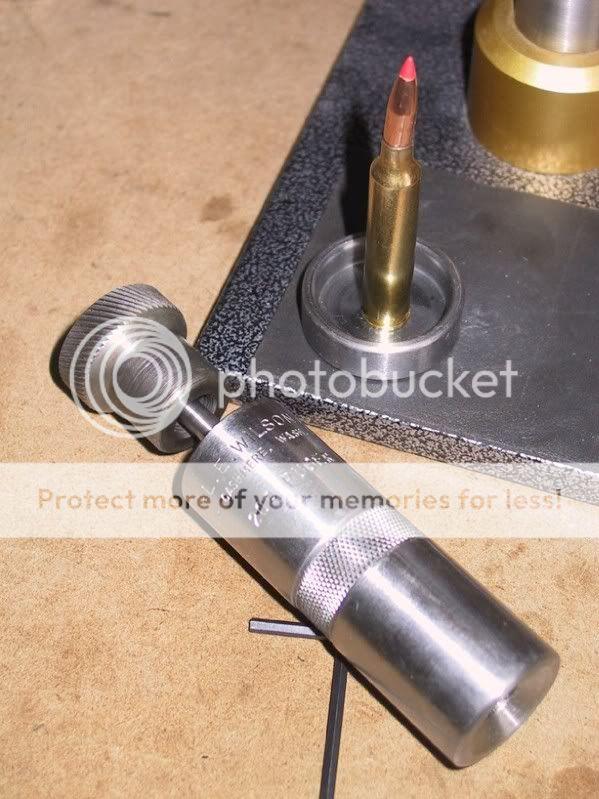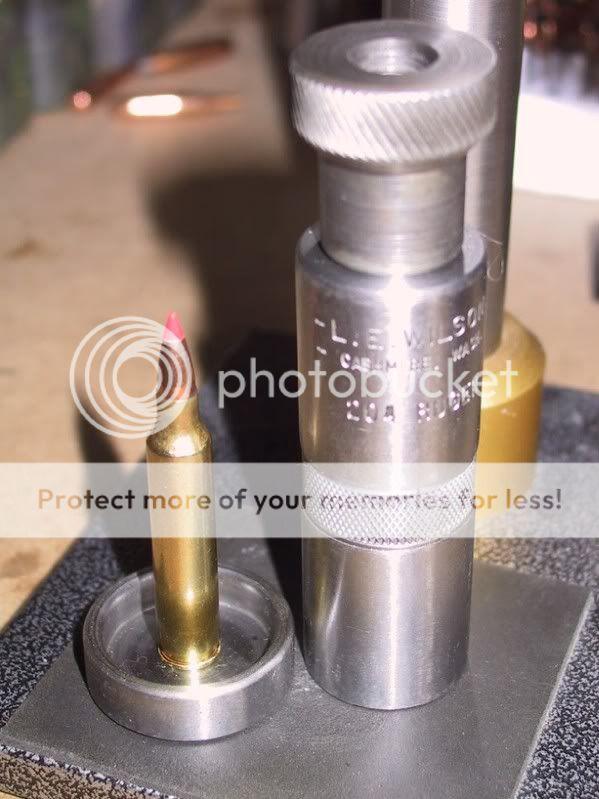I loaded up some 6mm berger 88gr high bc's for the 243 today and made a tool to measure bullet runout. I was amazed to find that i'm getting up to 12 thou runout near the tip.
Some of the things i noticed:
1. due to the sharp profile of the bullet, the seating plug does not touch it on the ogive, but the tip of the bullet sticks through the hole in the seating plug, causing the edge of the hole to be the only contact with the bullet, leaving a ring near the tip of the bullet. (standard lee seating die)
2. I'm getting quite a bit of runout on the case neck after bumping shoulders back with the lee full length sizing die.
3. i was trying to get into the lands, but due to the sharp profile, i cannot get into the lands and still fit into the magazine. At 74.9mm COAL i feed properly and seat 2/3 calibre into the neck without touching the lands. (i would have liked to get at least a calibre depth into the case neck, but that would take me miles off the lands.
I am not doing benchrest with this setup, but i need to get MOA accuracy or better without breaking the bank (bank's already broken )
)
Would it help to straighten them out after loading?
Any advice much apreciated.
P
Some of the things i noticed:
1. due to the sharp profile of the bullet, the seating plug does not touch it on the ogive, but the tip of the bullet sticks through the hole in the seating plug, causing the edge of the hole to be the only contact with the bullet, leaving a ring near the tip of the bullet. (standard lee seating die)
2. I'm getting quite a bit of runout on the case neck after bumping shoulders back with the lee full length sizing die.
3. i was trying to get into the lands, but due to the sharp profile, i cannot get into the lands and still fit into the magazine. At 74.9mm COAL i feed properly and seat 2/3 calibre into the neck without touching the lands. (i would have liked to get at least a calibre depth into the case neck, but that would take me miles off the lands.
I am not doing benchrest with this setup, but i need to get MOA accuracy or better without breaking the bank (bank's already broken
Would it help to straighten them out after loading?
Any advice much apreciated.
P

